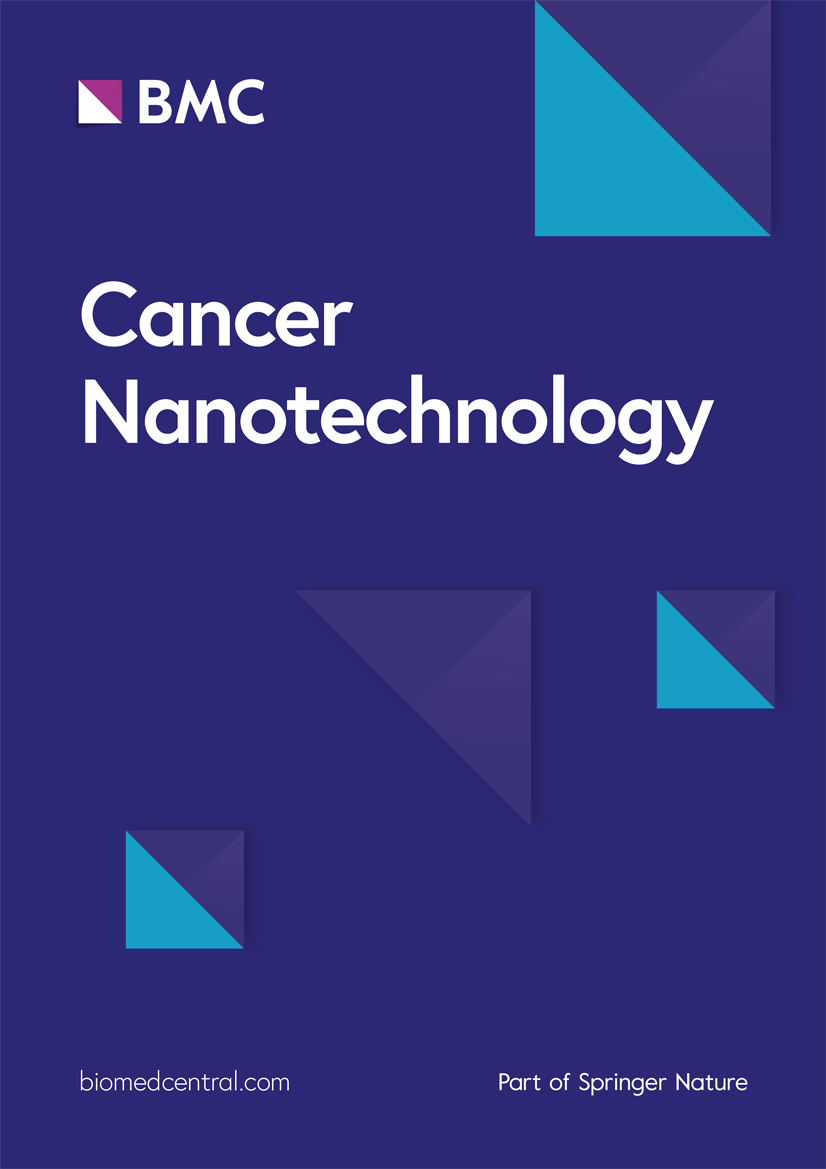Novel nanotherapeutics for cancer immunotherapy by albumin nanoparticles functionalized with PD-1 and PD-L1 aptamers
IF 4.8
2区 工程技术
Q2 NANOSCIENCE & NANOTECHNOLOGY
引用次数: 0
Abstract
PD-1/PD-L1 blockade plays a crucial role in cancer immunotherapy. Exploration of new technologies to further enhance the efficacy of PD-1/PD-L1 blockade is therefore of potential medical importance. Nanotherapeutics can accumulate in tumor tissues due to enhanced permeability and retention (EPR) effects. In this study, a novel nanotherapeutic for cancer immunotherapy was implemented with albumin nanoparticles functionalized by both PD-1 and PD-L1 aptamers. Albumin nanoparticles (NP) were functionalized with either PD-1 aptamers (PD1-NP), PD-L1 aptamers (PDL1-NP), or both types of aptamers (PD1-NP-PDL1). Average sizes of PD1-NP, PDL1-NP, and PD1-NP-PDL1 were 141.8 nm, 141.8 nm, and 164.2 nm, respectively. PD1-NP had good affinity for activated T cells that expresses PD-1. Similarly, PDL1-NP could bind with MDA-MB-231 or CT26 tumor cells that express PD-L1. Moreover, the bispecific PD1-NP-PDL1 could bind with both the activated T cells and the PD-L1-expressing tumor cells, and tether the two type of cells together. Functionally, aptamer-modified nanoparticles exhibited stronger immune-stimulating effects vs. free aptamers. Specifically, PD1-NP or PDL1-NP induced stronger lymphocyte-mediated cytotoxicity against PD-L1-expressing tumor cells in vitro vs. free PD-1 or PD-L1 aptamers. Animal studies also showed that PD1-NP or PDL1-NP significantly improved antitumor efficacy against CT26 colon cancer in vivo vs. free PD-1 or PD-L1 aptamers. Importantly, the bispecific PD1-NP-PDL1 further boosted the in vivo antitumor efficacy compared with PD1-NP or PDL1-NP, without raising systemic toxicity. The results suggest that the bispecific PD1-NP-PDL1 is a promising nanotherapeutic to improve the efficacy of PD-1/PD-L1 blockade, and may have application potential in colon cancer treatment.用 PD-1 和 PD-L1 合道体功能化的白蛋白纳米颗粒为癌症免疫疗法提供新型纳米疗法
PD-1/PD-L1 阻断疗法在癌症免疫疗法中发挥着至关重要的作用。因此,探索新技术以进一步提高 PD-1/PD-L1 阻断疗法的疗效具有重要的潜在医学意义。由于渗透性和滞留性(EPR)效应增强,纳米治疗药物可在肿瘤组织中蓄积。在本研究中,一种用于癌症免疫疗法的新型纳米疗法采用了由PD-1和PD-L1适配体功能化的白蛋白纳米颗粒。白蛋白纳米颗粒(NP)被PD-1适配体(PD1-NP)、PD-L1适配体(PDL1-NP)或两种类型的适配体(PD1-NP-PDL1)功能化。PD1-NP、PDL1-NP 和 PD1-NP-PDL1 的平均尺寸分别为 141.8 nm、141.8 nm 和 164.2 nm。PD1-NP 对表达 PD-1 的活化 T 细胞具有良好的亲和力。同样,PDL1-NP 也能与表达 PD-L1 的 MDA-MB-231 或 CT26 肿瘤细胞结合。此外,双特异性 PD1-NP-PDL1 还能与活化的 T 细胞和表达 PD-L1 的肿瘤细胞结合,并将这两种细胞拴在一起。在功能上,与游离的适配体相比,经适配体修饰的纳米粒子具有更强的免疫刺激作用。具体来说,在体外,PD1-NP 或 PDL1-NP 对表达 PD-L1 的肿瘤细胞诱导的淋巴细胞介导的细胞毒性比游离的 PD-1 或 PD-L1 接合体更强。动物实验也表明,与游离 PD-1 或 PD-L1 接合体相比,PD1-NP 或 PDL1-NP 能显著提高体内对 CT26 结肠癌的抗肿瘤疗效。重要的是,与PD1-NP或PDL1-NP相比,双特异性PD1-NP-PDL1进一步提高了体内抗肿瘤疗效,而不会增加全身毒性。结果表明,双特异性PD1-NP-PDL1是一种很有前景的纳米疗法,可提高PD-1/PD-L1阻断的疗效,在结肠癌治疗中可能具有应用潜力。
本文章由计算机程序翻译,如有差异,请以英文原文为准。
求助全文
约1分钟内获得全文
求助全文
来源期刊

Cancer Nanotechnology
Pharmacology, Toxicology and Pharmaceutics-Pharmaceutical Science
CiteScore
5.20
自引率
1.80%
发文量
37
审稿时长
15 weeks
期刊介绍:
Aim:
Recognizing cancer as a group of diseases caused by nanostructural problems (i.e. with DNA) and also that there are unique benefits to approaches inherently involving nanoscale structures and processes to treat the disease, the journal Cancer Nanotechnology aims to disseminate cutting edge research; to promote emerging trends in the use of nanostructures and the induction of nanoscale processes for the prevention, diagnosis, treatment of cancer; and to cover related ancillary areas.
Scope:
Articles describing original research in the use of nanostructures and the induction of nanoscale processes for the prevention, diagnosis and treatment of cancer (open submission process). Review, editorial and tutorial articles picking up on subthemes of emerging importance where nanostructures and the induction of nanoscale processes are used for the prevention, diagnosis and treatment of cancer.
 求助内容:
求助内容: 应助结果提醒方式:
应助结果提醒方式:


